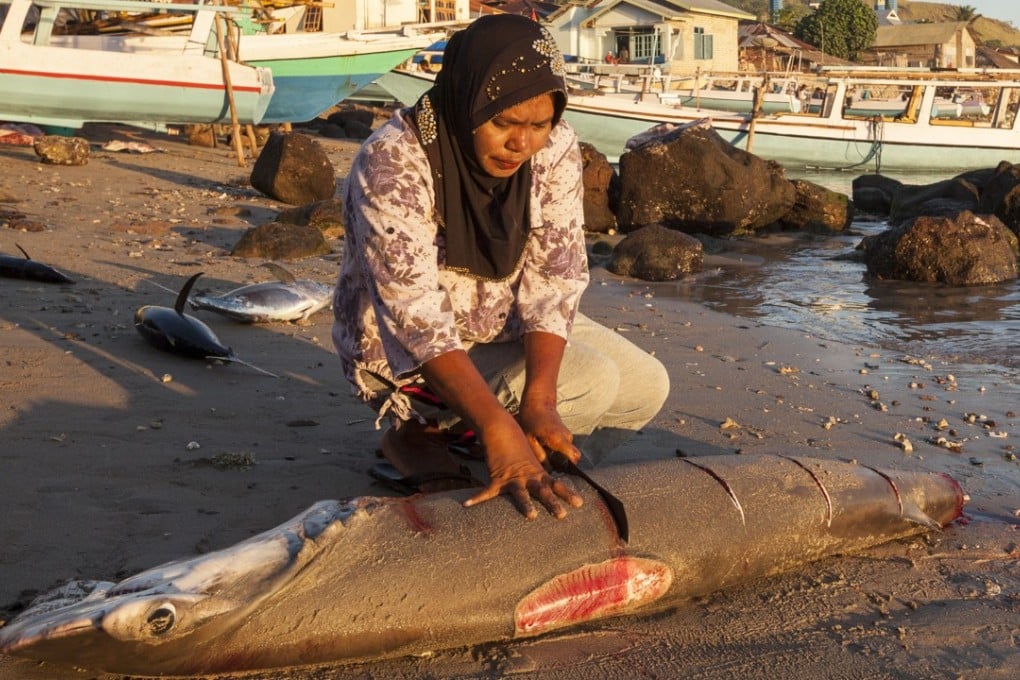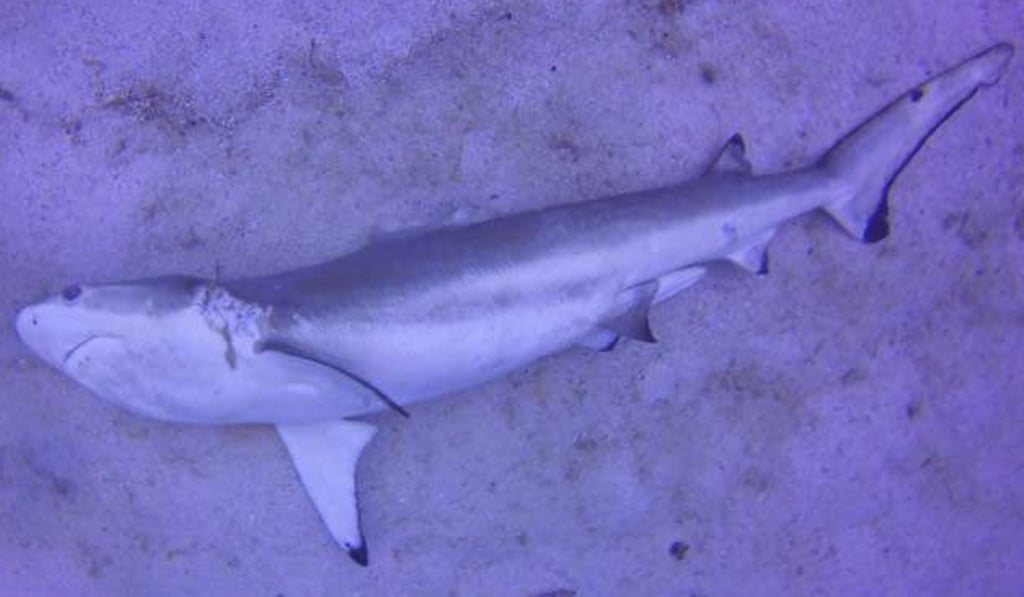Indonesia’s fishermen turn to shark finning to satisfy demand for shark’s fin soup and earn some extra money
Shark finning – slicing the fins off live sharks, then dropping them back into the ocean to die – earns fishing crews millions of rupiah, with most fins exported to markets including Hong Kong and Singapore for use in shark’s fin soup

Bloody chunks of shark meat are laid out for display at a seafood market in the Tanjung Luar regency of Lombok, the popular Indonesian tourist island next to Bali. A few men kneel down with sharp knives in their hands, adeptly slicing the carcasses on the floor.
Jackie Chan, Yao Ming back ad campaign against ivory, shark fin and rhino horn trade
Nazuruddin, a local fisherman, has just offloaded his catch. The 53-year-old has fished for sharks from an early age, following in his father’s footsteps. Every day he catches between three and 10 sharks.
“I only catch the fish that are not on the government’s list of prohibited species, such as grey reef sharks and tiger sharks,” he tells the Post, echoing the words of many other local fishermen. “I ask local officers about the latest regulations, and which types of sharks we can catch,” he adds.
Nazuruddin earns an average of 7 million rupiah (US$500) for each shark he sells. The flesh is popular with Indonesians.
Because tuna are more profitable, they just cut off the sharks’ fins and throw the rest of the fish back into the sea
However, the shark’s fin – still considered a delicacy in Asia – is the most profitable part. Each one can sell for between 1.5 million rupiah and 3 million rupiah, while the meat sells for only about 25,000 rupiah per kilogram.
This has not gone unnoticed among the fishermen who ply the seas around Indonesia, who did not fish for shark before. It has led to the cruel practice of shark finning – slicing the fins off live sharks which are dropped back into the ocean, unable to swim and heading for a slow death.
Although shark finning is illegal in the country, the activity is widespread. Indonesia is reportedly the biggest exporter of shark fin, followed by India. Although much of the produce may be derived from legal shark fishing, an unknown quantity of fins come from shark finning, often targeting protected species such is the demand.
